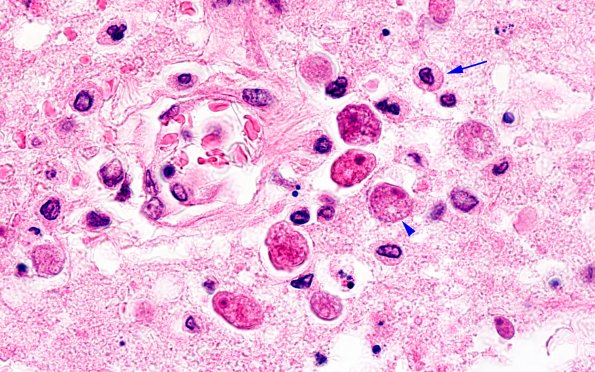Table of Contents
Washington University Experience | INFECTION | Protozoa | Ameba | 9A4 Ameba (Case 4) TS H&E 100X 2B copy
In this case distinguishing the organism (arrowhead) from a macrophage (arrow) is not difficult but distended macrophages in necrotic debris may be hard to distinguish. Amoebas typically have a large, single, eccentrically placed nucleus with a prominent karyosome, whereas macrophage nuclei are smaller, more centrally located and a less striking karyosome. Use of special immunohistochemical stains simplifies the process and allows typing of the organism (Balamuthia, Acanthamoeba, Naegleria, etc.).

